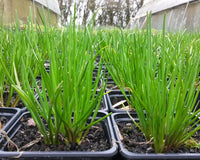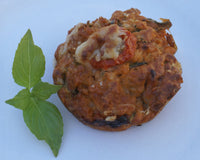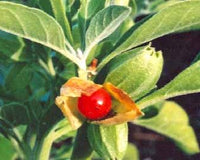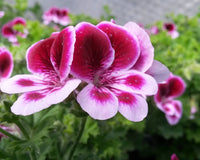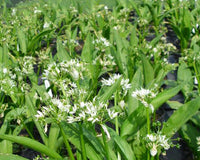Planning a herb garden can appear quite daunting, the choice of plants quite overwhelming as well as the growing terms applied to those herbs. If you are a beginner the two descriptive words to look out for together are hardy and perennial and though this doesn’t mean they are always the easiest to grow, it does mean you have a better chance of success.
Beginning
A great starting point for the initial herb garden list is the herbs you want to use, whether this is for eating, making teas, for medicines or simply for the bees. Don’t make the list too long, it is better to grow a smaller number of varieties well - a garden quite often evolves and is added to each year; it is often not until the second or third year that you see how big or spready (a made-up word!) a herb might be.
Aspect
The aspect of the plot you are planning is important and will determine which herbs do well. These are of course South, East, West, North, South East, South West etc. Whilst many herbs are adaptable in different aspects (except North), the Mediterranean types such as thyme, lavender and rosemary do need to be South facing. In the summer months South West and South East will give these herbs plenty of sun, but in the winter, this is reduced to such a small number of hours that they often struggle and die.
Height and Distance
It is a good idea to have a look at the height a herb may grow to. A bed against a fence or wall will want the higher growing herbs to the back – an island bed will want these in the middle with the shorter varieties around the edge. People often ask about spacing distances when planting. Although there isn’t a one size fits all, I generally recommend about 30 square centimetres (or a square foot) for each herb - these can be planted individually or in threes in a triangular shape where they will grow together into a rounded clump. Little creeping thymes and Corsican mint can be planted more closely for faster coverage of an area and some of the hefty thugs like comfrey and wormwood will need more space. Mint is one of those very ‘spready’ herbs, sending runners through the soil which can eventually take over the whole area. This one is better grown in a pot – it can look very attractive in a decent size terracotta pot placed directly on the soil (where the roots will have some access through the bottom for water and food) with the other herbs growing up around it.
Herb Types
Hardy, perennial herbs can be either evergreen, which means like they don’t lose their leaves in winter or herbaceous, where they die down in the autumn, lay dormant over winter and re-emerge in spring. This means a bed planted with only herbaceous herbs can look quite bare during the winter months. If you are a spring and summer gardener who barely glances in the direction of the garden over this time of year it isn’t really a problem, otherwise it is worth having some well-spaced evergreens for a bit of winter interest, leaving space for the others to pop up around them in spring.
Recommendations
Some very easy to grow, tasty, perennial and hardy herbs to start with, which grow in full or half day sun (a couple in shade) would be:
- Chives – cut and come again through the summer, edible flowers
- Garlic chives – cut and come again which are often green through most of the winter, edible flowers
- Oregano – Pick the leaves right the way through the summer – the warmer the weather, the spicier the leaves.
- Parsley – both curly and flat, cut and come again. This one is a biennial which means it only lives for two years.
- Mints – all varieties, keep cutting and using through the summer. Experiment with different flavours.
- Sorrel – fresh lemony sharp leaves, one of the first herbs to appear in spring.
- Lemon balm – Lovely lemon leaves to harvest through the summer, usually a small rosette of leaves visible throughout winter.
- Marjoram pot, golden, golden curly and gold tip – harvest leaves throughout the summer
- Thyme tabor – a good flavour and one of the more robust thymes that seems to cope with our wet winters even if it isn’t completely south facing.
- Bay – remember this is actually a tree and once it reaches a decent height you will have more leaves than you can ever use. This prefers a shady spot, either North or North West facing.
- Fennel – delicious aniseed leaves to cut through the spring and summer. This grows better in the ground and gets very tall. It is not the variety that produces bulbs.
- Wild garlic – appears in early spring, eat the leaves and flowers, leave the bulbs to produce a spreading clump each year. Prefers a shadier spot.

A Handful More
- Rosemary – slower growing and evergreen, does like to be well drained and south facing ideally but does grow in half sunny positions. Never cut back into the old wood.
- Sage – slow growing and evergreen and ideally south facing though does grow in half sun positions. Looks miserable most of the winter but then bounces back into life when the weather warms up. Don’t cut back into the hard wood.
- Thymes – really do need sun all day and well drained soils, it is the wetness and lack of light rather than frost that often finishes them off. If you can’t provide the aspect they require, give them a chance to survive over winter with the expectation you will need to replace them each year.
- Tarragon – The French variety is packed with flavour but more difficult to grow. It is better in a pot as in the ground it disappears after two or three years because it detests our wet winters. If you are able to keep it in a drier spot like a cold frame or greenhouse overwinter there is a much better chance of it surviving – if you can’t just make sure the pot is packed full of root by the end of summer, to the point of being pot bound.
- Winter savory – a spicy little herb, evergreen and prefers full sun but does survive with less. Harvest leaves through the summer, they become spicier the warmer the weather.

Growing in Containers
We don’t all have gardens and luckily most herbs grow very well in pots and containers.

Keep them healthy by feeding regularly with a liquid feed, one suitable for vegetables is fine. It is better to pot them on gradually into containers a little bigger each time, allowing them to root into the new compost before potting on again. This is especially important in early spring when growth is slow and the weather still very wet. A small root ball surrounded by a lot of soggy wet compost is unable to absorb nutrients from the soil easily and is also at risk of rotting. Different varieties can be grown successfully in the same pot (avoid mint in the mix as mentioned above) and remember that they may grow at different rates.
Most of all – enjoy the whole process, the more you do the better you get at it, there is always something new to learn regardless of experience 😊


